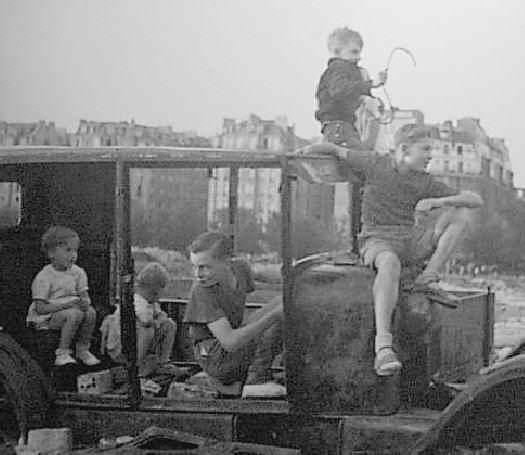
Figure 1.--This 1955 photograph shows two twins in light colored rompers who have tagged along with their older brothers. Note the back tieing bows on the rompers.


Figure 1.--This 1955 photograph shows two twins in light colored rompers who have tagged along with their older brothers. Note the back tieing bows on the rompers. |
Rompers were primarily a play suit, but dressy or formal wear versions also appeared. Play rompers might be worn at home or in trips to the park or beach. In the 1940s and early 50s it was common to see pre-school boys in rompers tagging after their older brothers who were usually wearing short pants. Dressy rompers might be worn to a party. Boys did not wear rompers to school. Once school started boys would normally stop wearing rompers. Boys being home schooled might wear romers longer than those going to school. Some boys for a year or so after they began school might wear rompers after school for play or for dressy occassions, but this was not common. At this time we do not have details on the styles of rompers involved. The colors we have noted all tend to be light colors--especially light blue. HBC has noted some dark colored dressy romper suits--usually in velvet. The play rompers almost always have been light colored outfits.
Rompers were primarily a play suit. Play rompers might be worn at home or in trips to the park or beach. In the 1940s and early 50s it was common to see pre-school boys in rompers tagging after their older brothers who were usually wearing short pants. Dressy rompers might be worn to a party. Boys did not wear rompers to school. Once school started boys would normally stop wearing rompers. Boys being home schooled might wear romers longer than those going to school. Some boys for a year or so after they began school might wear rompers after school for play but this was not common. At this time we do not have details on the styles of rompers involved. The colors we have noted all tend to be light colors--especially light blue. The play rompers almost always have been light colored outfits. A lot of the paly outfits we have noted in the 1940s and 50s were pnepiece suits.
Dressy or formal wear versions also appeared. Some boys for a year or so after they began school might wear rompers for dressy occassions. HBC has noted some dark colored dressy romper suits--usually in velvet. We do not yet, however, have a lot of details about the styles of the dressy suits. We think this depended somewhat on the age of the boy and the chronological period. We have seen dressy outfits that were mostly one-piece outfits for the youngest boys and suspender or button-on romperts for slightly older boys in the 1940s and 50s. French families going to church or dressing up for other occassions might have the younger boys in rompers. We have also seen some dressy one-piece suits in the 1980s.
Navigate the Historic Boys' Clothing Web Site:
[Return to the Main romper page]
[Return to the Main French romper page]
[Introduction]
[Activities]
[Bibliographies]
[Biographies]
[Chronologies]
[Countries]
[Style Index]
[Contributions]
[Frequently Asked Questions]
[French Glossary]
[Main HBC page]
Navigate the Historic Boys' Clothing Web chronological pages:
[The 1890s]
[The 1900s]
[The 1910s]
[The 1920s]
[The 1930s]
[The 1940s]
[The 1950s]
Navigate the Historic Boys' Clothing Web style pages:
[Dresses]
[Smocks]
[Bodice kilts]
[Kilts]
[Sailor suits]
[Sailor hats]
[Ring bearer/page costumes]
[Shortalls]
